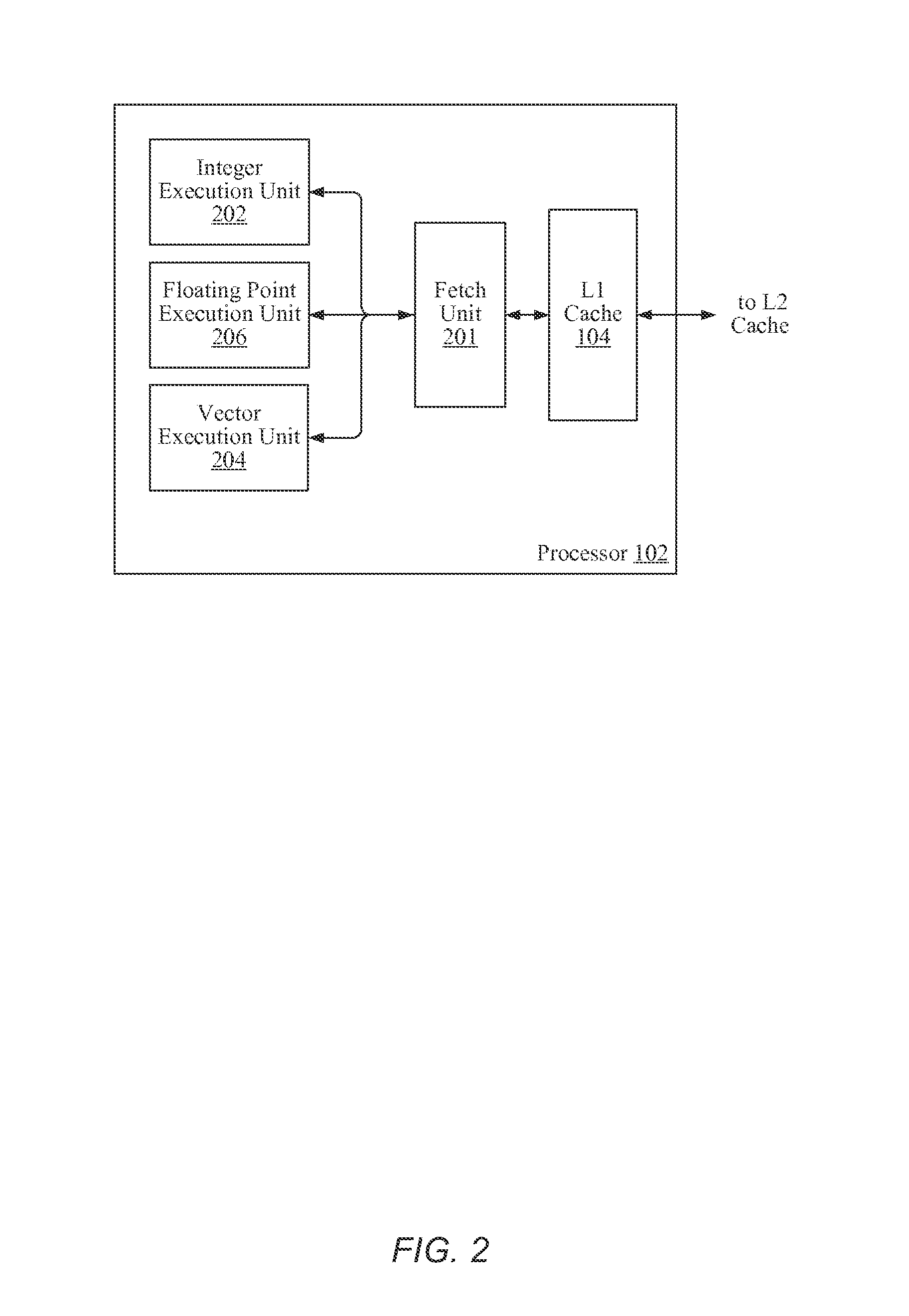Enhanced vector true/false predicate-generating instructions
- Summary
- Abstract
- Description
- Claims
- Application Information
AI Technical Summary
Benefits of technology
Problems solved by technology
Method used
Image
Examples
example 2b
Program Code Loop 2
[0103]
j = 0;for (x=0; x{ if (A[x+j] { j = A[x]; } B[x] = j;}
[0104]In Example 2A, the control-flow decision is independent of the loop-carried dependency chain, while in Example 2B the control flow decision is part of the loop-carried dependency chain. In some embodiments, the loop in Example 2B may cause speculation that the value of “j” will remain unchanged and compensate later if this prediction proves incorrect. In such embodiments, the speculation on the value of “j” does not significantly change the vectorization of the loop.
[0105]In some embodiments, the compiler may be configured to always predict no data dependencies between the iterations of the loop. In such embodiments, in the case that runtime data dependencies exist, the group of active elements processed in parallel may be reduced to represent the group of elements that may safely be processed in parallel at that time. In these embodiments, there is little penalty for mispredicting more parallelis...
example 4
Program Code Loop 4
[0140]
j = 0;for (x=0; x{ f = A[x]; g = B[x]; if (f { h = C[x]; j = E [h]; } if (g { i = D[x]; E[i] = j; }}
[0141]Referring to FIG. 8, the vectorized loop includes predicates p1 and p2 which indicate whether array E[ ] is to be read or written, respectively. The CheckHazardP instruction checks vectors of addresses (h and i) for memory hazards. The parameter p2 is passed to CheckHazardP as the predicate controlling the second memory operation (the write). Thus, CheckHazardP identifies the memory hazard(s) between unconditional reads and conditional writes predicated on p2. The result of CheckHazardP is zero-predicated in p1. This places zeroes in the DIV(ix) for element positions that are not to be read from E[ ]. Recall that a zero indicates no hazard. Thus, the result, stored in ix, is a DIV that represents the hazards between conditional reads predicated on p1 and conditional writes predicated on p2. This is made possible because non-hazard conditions are r...
PUM
 Login to View More
Login to View More Abstract
Description
Claims
Application Information
 Login to View More
Login to View More - R&D
- Intellectual Property
- Life Sciences
- Materials
- Tech Scout
- Unparalleled Data Quality
- Higher Quality Content
- 60% Fewer Hallucinations
Browse by: Latest US Patents, China's latest patents, Technical Efficacy Thesaurus, Application Domain, Technology Topic, Popular Technical Reports.
© 2025 PatSnap. All rights reserved.Legal|Privacy policy|Modern Slavery Act Transparency Statement|Sitemap|About US| Contact US: help@patsnap.com



